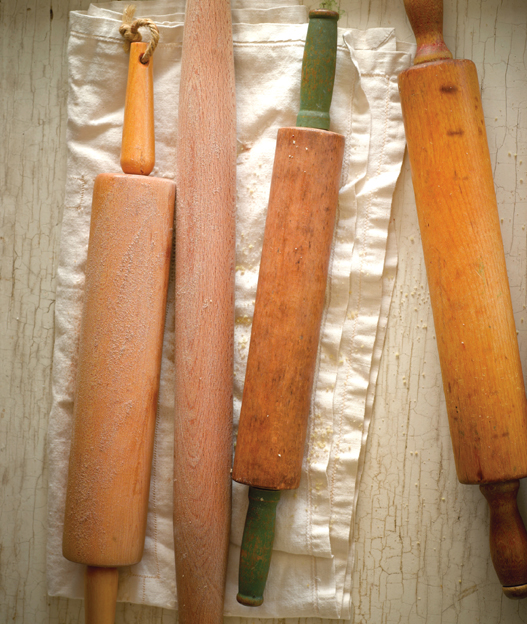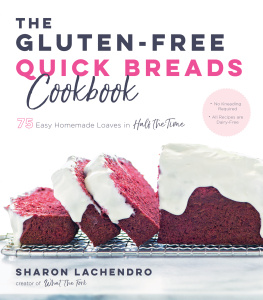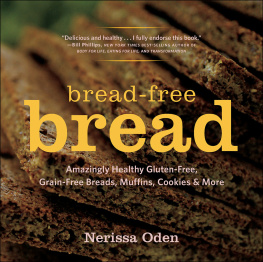Copyright 2012 by Jennifer Katzinger
All rights reserved. No portion of this book may be reproduced or utilized in any form, or by any electronic, mechanical, or other means, without the prior written permission of the publisher.
Published by Sasquatch Books
Cover and interior photographs: Kathryn Barnard
Cover and interior design: Anna Goldstein
Library of Congress Cataloging-in-Publication Data is available.
eISBN: 978-1-57061-834-5
Sasquatch Books
1904 Third Avenue, Suite 710
Seattle, WA 98101
(206) 467-4300
www.sasquatchbooks.com
v3.1_r1
For Lillian





T HERE ARE SO MANY PEOPLE to whom I feel gratitude, that have influenced the turn of events to this point such that I have found myself authoring a third cookbook! First and foremost, thank you, Joseph. Thank you for sharing your life with me, I love you. Thank you for courageously and lovingly inspiring me to go after what I find to be meaningful. Thank you, Lilli. Thank you for always showing me new ways. This most precious and sacred gift of being your mommy and getting to know you every day, I cherish with all my heart. I love you, Lilli. Thank you, Gabrielle Anderson. I am so grateful for your friendship. Your pureness of heart, ardor for vitality, and nurturing presence enkindle such joy in Joseph, Lilli, and me. Thank you to all of Lillis grandparents, aunts, uncles, and cousins. All your love and support is deeply felt. Thank you to the entire Sasquatch Books team: working with all of you is such a creative, productive, and joyful experience. Thank you, Susan Roxborough, for your guidance and for having the confidence in me to author a third book. Thank you, Rachelle Long, for your graceful and instructive communication. Thank you, Anna Goldstein, for your beautiful design work. It is such a great pleasure to work with you. Thank you, Kathryn Barnard. Your photos make my books come to life in such artful and mouthwatering ways. It is an honor to have your involvement. There are so many people I havent mentioned whose enthusiasm, friendship, and support have fueled the manifestation of this book. I hope when you read this you all know who you are and how grateful I am.

W RITING THIS GLUTEN-FREE, VEGAN bread-baking book has been an earnest goal of mine for some time. Making bread at home has the power to transport you right into the most precious of places. There you will find yourself at your kitchen counter, completely immersed in the act of working with your hands, creating a dough with all your senses engaged that will be baked into a nourishing choice staple for you and your family. Bread has a rare and special presence in our lives as a food we hold in the highest esteem, a food that has been in existence since ancient times and is still present at most meals, whether fancy or casual, across numerous cultures. Sharing bread with others is a very common and yet a very sacred experience.
It also seems that there is a growing movement afoot. More and more people are taking time to participate in the most simple yet fulfilling acts of living: baking their own bread, shopping at farmers markets, getting involved with community gardens, making music, and more.
Being able to bake your own bread with ingredients full of life-giving sustenance is very empowering. And, it can be extremely gratifying to bake your own gluten-free and vegan bread. I am going to go so far as to say that right now it is even essential if you want your bread to be of high quality. I am acutely aware of the gluten-free breads available in the supermarkets and how they are very rarely also vegan or even dairy- and egg-free. They also tend to be laden with cornstarch and high fructose corn syrup, are heavy on guar and xanthan gums, lacking in whole grains (and therefore fiber), and arent usually organic. I believe you will benefit on so many life-enriching levels by baking your own bread. If you are someone who has celiac disease; are gluten-free and vegan; or even just avoid eggs, dairy, or gluten due to allergies or food sensitivities (but you love healthy bread), I believe you will use these recipes often. Partaking in this age-old tradition of baking, you will be connecting with the timeless experience of transforming flour and water into bread to be shared.
Upon commencing the creation and collection of these bread recipes, I drew upon my first gluten-free and vegan bread experiences from back when I started the Flying Apron Bakery. That was a time when I predominantly used single-strain yeast, baking soda, and some batter bread techniques. Although I had always wanted to be intimately involved in creating and working with a gluten-free sourdough starter, this seemed like too much of an undertaking when I ran the bakeryin part, I suppose, because we had our hands full with the production of so many pastries. I am now thrilled to say I have a gorgeous gluten-free sourdough starter in my refrigerator, and it is such a joy to be independent (when I want to be) of store-bought yeast, and to be enjoying bread that has the tangy taste of a slight fermentation. I also relish knowing that my family is reaping the benefits from breads that have many strains of yeast instead of just one, as well as containing all those extra B vitamins.
The spectrum of recipes in this book covers lighter soft sandwich breads, old-world flatbreads, crusty baguettes, sweet yeasted breads, very hearty whole grain breads, breads made with their own wild starter, wholesome batter breads, and instantly gratifying quick breads. With every recipe my desire has been to create something beautiful, delicious, and nurturing. If you are a health nut like me, you will probably find the wild starter breads and batter breads to be the healthiest in the book; still, all of the breads here are beneficial and health-promoting, made with wholesome ingredients that are nutrient dense, have very little added sweetener, and use minimal xanthan gum, when it is called for at all.
The About the Ingredients section (how exciting it is to be making and savoring this gluten-free, vegan bread. Even the lighter yeasted breads, which offer a little less fiber, are made with flours such as teff, amaranth, sorghum, and quinoa. All of these grains are valued for their unique content of minerals and vitamins, and are naturally high in protein and fiber. You will also notice chia seeds and flax meal in many ingredient lists: both are powerhouses for fiber and nutrition. Delving into and exploring each ingredient in order to compile this section of the book was extremely gratifying and enlightening.

















